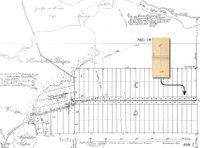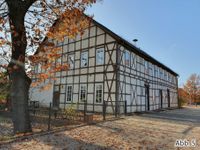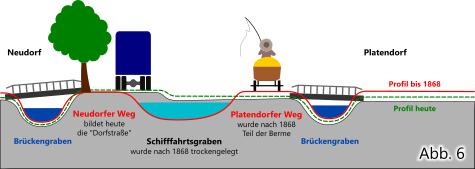Rising out of the revolution
Until 1918 Germany was a dictatorship. Anybody who spoke out against the king risked imprisonment or even death. “The king was crowned by God,” proclaimed the king. He rejected the idea of a crown being conferred by man. “The revolutionaries are unworthy of a bullet; use a noose,” his highness wrote in 1848.
The German revolution of 1848 gave rise to the first German constitution and the right to self-administration on the communal level. From today’s perspective, the law was far from perfect. Only men, not women, were permitted to vote and to represent the citizens. Moreover, they had to be 25 years of age. From 1849, all council sessions were public.
Two important decisions of the municipal council were the key to economic success: The building of the Dorfstraße, the main road through the village, allowed people and goods to be transported on a public path. The new school was a magnificent building by the standards of the times (Figs. 4 and 5). If consisted of four large classrooms, three apartments for the teachers and a prayer room. Well educated children were important, especially for the industrial revolution in peat cutting.
The villages of Neudorf and Platendorf did away with the shipping canal that separated their villages and was only used by the king. They filled in the canal and built the paved Dorfstraße (Fig. 6). The colonists financed the building of the road with the Sparkasse in Gifhorn by mortgaging their own properties.
The citizens transferred the entire property between the two ditches to communal property. The new berm (Fig. 6) was also used for agricultural purposes
The access tracks and bridges (marked in red in Figure 7) from the individual properties to the newly created Dorfstraße were financed, built and maintained by the citizens themselves. This remains true today for 114 bridges and the tracks and paths they lead on to. Some of the bridges lead to residential houses in which two people live. Other bridges are used to access more than 20 buildings with up to 100 residents. Twelve bridges and roads in the village have been built and are maintained by the Sassenburg municipality.
With around 2,500 bridges, Hamburg is considered to be one of the bridge-richest cities in Europe. But relative to the population, Neudorf-Platendorf, which currently has 2,800 residents, not only has the longest straight cross-town road in Lower Saxony, it also has the most bridges: 126 in total. Decorated bridges, functional bridges and bridges marked with the names of the builders can be found along the Dorfstraße.
Links to other stations in the museum - in English language:
<1> <2> <3> <4> <5> <6> <7> <8> <9> <10> <11> <12> <13> <14> <15> <16> <17> <18> <19> <20> <21> <22> <23>




